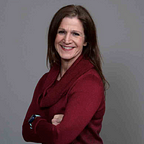Who Are We Behind Our Masks?
We’re not living authentically if we overly identify with our social roles.
One of my former students, a popular Instagram figure, had painted beautiful murals on the walls of her apartment. When it was time for her to move out, she had to repaint the walls white.
Although it somewhat pained her to cover her beloved lion mural, she gave her viewers a lesson in non-attachment. “The lion is still there, knocking around,” she said. “He’s just wearing a mask.” However, we do this ourselves throughout our lives, painting various layers over our true selves.
The problems with our masks
We put on various masks to shield ourselves from the world. We put on several masks to define “us” in one context, only to put on another mask to define “us” in another. One mask might serve to protect us, and another might help us blend in with others.
One problem, however, is when we believe that we are the masks we wear. We see this in a society that upholds identity politics and cultural ownership. We see this when we emphasize “us vs. them.” We claim this dance or clothing style is “ours.” We put walls, boundaries, and borders around what belongs to “us.” What falls outside these lines is “them.” Our classifications make us feel comfortable…
